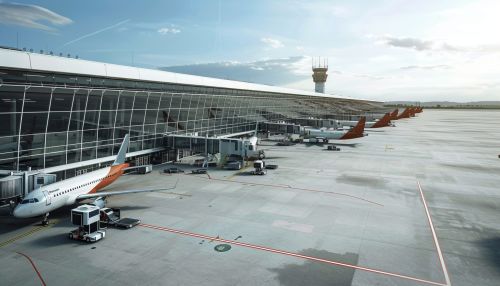Salt Lake City International Airport
Overview
Salt Lake City International Airport (SLC) is a major public airport located approximately 4 miles west of downtown Salt Lake City, Utah, United States. It serves as a hub for both domestic and international flights and is one of the busiest airports in the western United States. The airport is operated by the Salt Lake City Department of Airports and is a primary gateway to the Intermountain West region.
History
The origins of Salt Lake City International Airport date back to 1911 when a small airstrip known as Basque Flats was established. The first commercial flight took place in 1920, and by 1926, the airport was officially designated as Salt Lake City Municipal Airport. Over the decades, the airport underwent several expansions and renovations to accommodate increasing passenger and cargo traffic. In 1968, it was renamed Salt Lake City International Airport to reflect its growing international presence.
Facilities
Salt Lake City International Airport spans over 7,700 acres and features three runways, two parallel and one crosswind. The airport's infrastructure includes two main terminals, Terminal 1 and Terminal 2, which house a total of 46 gates. The terminals are equipped with modern amenities, including restaurants, shops, lounges, and business centers.
Runways
The airport has three runways:
- Runway 16L/34R: 12,003 feet long, primarily used for large commercial aircraft.
- Runway 16R/34L: 12,000 feet long, parallel to 16L/34R, used for both commercial and general aviation.
- Runway 17/35: 9,596 feet long, used mainly for general aviation and smaller commercial aircraft.
Terminals
The airport's terminals are designed to handle a high volume of passengers efficiently. Terminal 1 primarily serves domestic flights, while Terminal 2 handles both domestic and international flights. Each terminal is equipped with security checkpoints, baggage claim areas, and various passenger services.


Airlines and Destinations
Salt Lake City International Airport is a hub for Delta Air Lines, which operates numerous flights to destinations across North America, Europe, and Asia. Other major airlines serving the airport include Southwest Airlines, American Airlines, United Airlines, and Alaska Airlines. The airport offers direct flights to over 100 destinations, including major cities such as New York City, Los Angeles, Chicago, London, and Tokyo.
Cargo Operations
In addition to passenger services, Salt Lake City International Airport is a significant hub for cargo operations. The airport handles a substantial volume of air freight, with major cargo carriers such as FedEx, UPS, and DHL operating regular flights. The cargo facilities at the airport are equipped with advanced handling and storage systems to ensure efficient processing of goods.
Ground Transportation
Salt Lake City International Airport is well-connected to the surrounding region through various ground transportation options. These include rental car services, taxis, ride-sharing services, and public transportation. The airport is accessible via Interstate 80, which provides direct access to downtown Salt Lake City and other major highways.
Public Transit
The Utah Transit Authority (UTA) operates the TRAX light rail service, which connects the airport to downtown Salt Lake City and other parts of the metropolitan area. The Green Line of the TRAX system provides a convenient and cost-effective transportation option for passengers.
Environmental Initiatives
Salt Lake City International Airport is committed to sustainability and has implemented several environmental initiatives to reduce its carbon footprint. These include energy-efficient building designs, waste reduction programs, and the use of renewable energy sources. The airport has also invested in electric ground support equipment and alternative fuel vehicles to minimize emissions.
Future Developments
The airport is currently undergoing a major redevelopment project known as the Terminal Redevelopment Program (TRP). This multi-billion-dollar initiative aims to modernize and expand the airport's facilities to accommodate future growth. The project includes the construction of new terminals, concourses, and parking structures, as well as improvements to the airfield and roadway systems. The TRP is expected to be completed in phases, with final completion anticipated by 2024.
